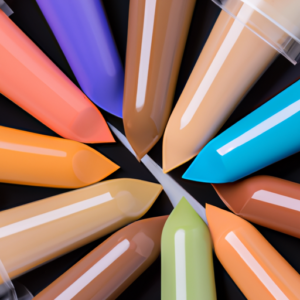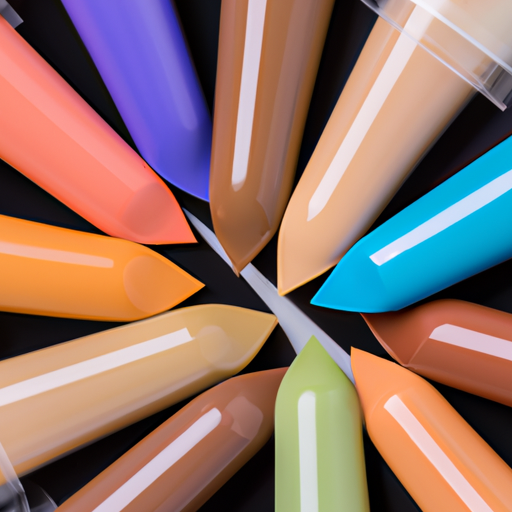The word concealer brings to mind a magical product that can erase dark circles, blemishes, and dullness – but it’s so much more than that! Concealer is an invaluable tool in any beauty enthusiast’s routine. Whether you’re looking to cover up acne scars or give your skin an all-over boost of radiant health, there’s a concealer out there specifically designed to help you achieve your goals.
Concealers come in different formulas, and the right one for you will depend on the issues you want to address. For example, if you have oily skin, you might opt for a matte finish to prevent shine. On the other hand, people with dry skin may want something with added hydration.
Ready to get to know concealer better? Let’s take a look at the various kinds available.
Consider Your Skin Type
When it comes to finding the right concealer, there’s no one-size-fits-all. It all starts with your skin type. If you don’t get the basics right, your concealer won’t do its job, so it’s essential to know what works best for you.
If you’ve got oily skin, you’ll want to avoid thick formulas and greasy ingredients. Look for oil-free concealers that also have a matte finish. You could also opt for long-lasting, waterproof formulas to keep sweat and shine away.

If you’re on the drier side, go for something lightweight, rich in hydrating skincare ingredients, like hyaluronic acid, to keep your complexion moisturized. A creamy, medium-coverage concealer should do the trick.
Most of us have combination skin, which means you need to find a balance between the two extremes. Gel or liquid concealers, with a natural finish, can help even out patches without drying out your skin.
Identify Your Skin’s Undertone
When it comes to concealers, understanding your skin’s undertone is crucial. Without doing so, you won’t be able to accurately match or choose the right shade of concealer for your complexion.
The first thing to do is determine what type of undertone you have. This can be warm, neutral or cool. To figure out which one you have, hold a piece of white paper up to your face in natural light and check the color that shows through.
If your complexion appears yellowish, you have a warm undertone. If you have more of a pink hue to your skin, you have a cool undertone. If you feel like neither of these apply to you, then you have a neutral undertone. It may take some trial and error to work out your exact undertone, so don’t worry if you think you made a mistake the first time – it happens!
Undertones aren’t obvious at first glance, but they play a huge role in how well your concealer matches your skin. That’s why it’s important to narrow down your options before you even think about buying a concealer.
Choose the Right Shade of Concealer
Figuring out what shade of concealer you need can be like solving a puzzle, but don’t worry! I’m here to help. Whether you have fair skin or deep complexion, there’s a perfect-matching shade out there. Here are some tips on how to find it.
Firstly, consider your skin type. Do you have an oily, dry or combo complexion? Oily skin types may require heavier coverage so avoid creamy formulas. Dry skin will benefit from creamier concealers — something with more emollients to keep skin hydrated and moisturized. And if you’re blessed with combo skin, opt for medium coverage concealer to balance out the oily and dry patches.
Secondly, you’ll want to figure out your skin’s undertones. If your veins look greenish, you’ve got warm undertones; blue-ish veins mean you’re cool-toned; and if the veins appear purple, you likely have neutral tones. For warm undertones, go for honey, bronze or golden shades, but avoid yellowish or pinkish hues. Cool-toned gals should pick shades in the range of ash blonde to taupe. If you’ve got neutral undertones, you’re lucky — almost any color will do!
Next, think about what you’re trying to cover up. If you’re looking for full-coverage foundation, then matching concealer shades can give you an all-over even complexion. But if you want to hide dark circles, grab a concealer that’s one or two shades lighter than your foundation. It helps to go to store counters where they mix colors and try different shades on.
Finally, when it comes to application, use brushes, sponges, or beauty blenders — whatever works best for you. Remember not to cake it on. Start small and build up coverage where needed.
Application Tips
So you’ve figured out what type of skin you have, picked the perfect undertone, and found the perfect concealer shade – the final step is actually applying it! Here are a few tips for doing this without any issues.
First things first: use a brush or beauty blender to apply your concealer. Brushes create a flawless finish and will help blend the concealer into your foundation perfectly. Beauty blenders also create an amazing finish and are great if you want to soften your coverage a bit.
Now onto the actual application – start by dabbing a small amount of concealer onto any problem spots, such as dark circles or redness. Gently blend it in with the brush or beauty blender until the area looks seamless. Then, move onto your entire face and make sure everything is evened out. That’s it! It might take a bit of practice to get right, but once you do you’ll be able to masterfully apply your concealer in no time.
Conclusion
Well, it looks like we’ve rounded out our journey of concealer education! I hope this primer on how to pick the right one has been helpful. It turns out, there’s a lot more to it than meets the eye. With the range of skin types, undertones, and shades available, you can really create something special for yourself – a tailor-made solution to your coverage needs.
Whether you’re dealing with dryness, oiliness, or dark circles, know that taking the time to choose the right concealer pays off. You don’t have to settle for anything less than perfection when it comes to your makeup. Now that you’ve got all this knowledge in your back pocket, it should be easy to find the perfect concealer!
Choosing Concealer
What color skin tone should I use for concealer?
Choosing the right concealer for your skin tone isn’t always easy, especially if you’re new to makeup. But if you know what to look for, it can be a breeze. First, figure out your skin tone. If you have light skin, look for a concealer that’s one shade lighter than your foundation. If you have medium to dark skin, look for a concealer that’s two to three shades lighter than your foundation. You can also try using a pink or peach tinted concealer to counteract any dullness or darkness in your complexion. To find the right texture, go for something creamy and blendable. Look for products with a natural, healthy-looking finish, rather than something that’s too shiny. And if you need more coverage, try a full-coverage concealer.
And don’t forget to check the shade in natural light – what looks good in the store might not necessarily look the same once you get home. Last but not least, go for waterproof or long-wearing formulas to help the concealer last all day. With a little bit of trial and error, you’ll soon find the perfect concealer for your skin tone.
How do you match concealer to skin?
Finding the right concealer for your skin tone can be tricky, especially if you’re new to makeup and don’t know where to start. I’m here to give you the lowdown on how to pick the perfect concealer for your complexion.
To find the best concealer for your skin, you’ll need to determine your skin tone first. Generally, there are three categories: warm, cool, and neutral.
For warm skin tones, you should look for a yellow-based concealer to balance out the redness in your skin. Look for a concealer that matches the lightest areas of your face, such as your forehead and nose. Also, look for a concealer that has yellow undertones, as this will help to reduce the redness in your skin.
If you have cool skin tones, you should opt for a pink-based concealer. This will help to counteract any sallowness in your complexion. Also, select a concealer with pink undertones, as this will help to brighten up the area and create a more even skin tone.
If you have neutral skin tones, then you’re in luck, as you can use a variety of different concealers. Generally, look for a concealer that has both cool and warm undertones. This will help to even out your skin tone and provide a natural glow.
At the end of the day, you should experiment with different types of concealer till you find one that works best for your skin tone. Remember, the right concealer can make all the difference in your makeup, so take the time to find the right one for you!
Should concealer be lighter or darker than your skin?
When it comes to choosing the right concealer for your skin tone, the best advice I can give is that lighter is usually better. While the general rule of thumb is to go a shade lighter than your natural skin tone, that doesn’t always work for everyone. Everyone’s skin tone is different, so it’s important to find the shade that is the most flattering for your unique skin tone. To do that, you’ll need to experiment a bit with different shades.
Start by looking for a shade that is only one or two shades lighter than your skin tone, and work your way up from there. You don’t want to go too light, or you’ll end up creating an unnatural look. As you experiment, keep in mind that you may find different shades look better in different areas of your face. Once you find the perfect shade, make sure to buy it in both a liquid and a cream formula, so you can use whichever works best for your skin.
Another factor to consider when picking out your concealer is the undertone of your skin. If your skin has a cool undertone, you’ll want to look for a concealer with a pink or peach-based undertone. On the other hand, if your skin has a warm undertone, you’ll do better with a yellow or orange-based concealer. Finally, always make sure to test the shade on your wrist, as this will be the closest match to your face.
By following these tips, you should be able to easily pick out the perfect concealer for your skin tone. Remember that a little experimentation is key, so don’t be afraid to try out different shades until you find the one that works for you. Good luck!
